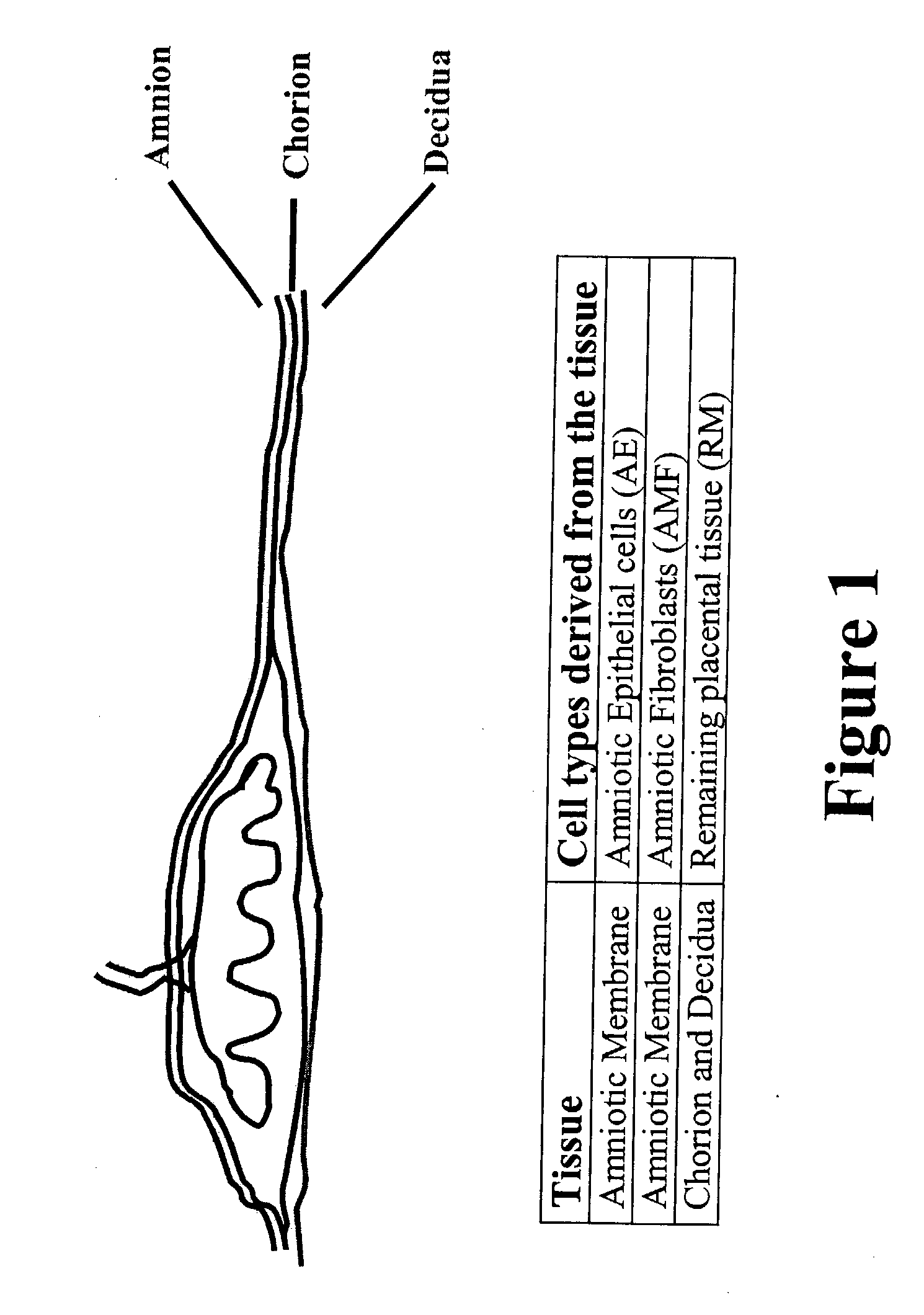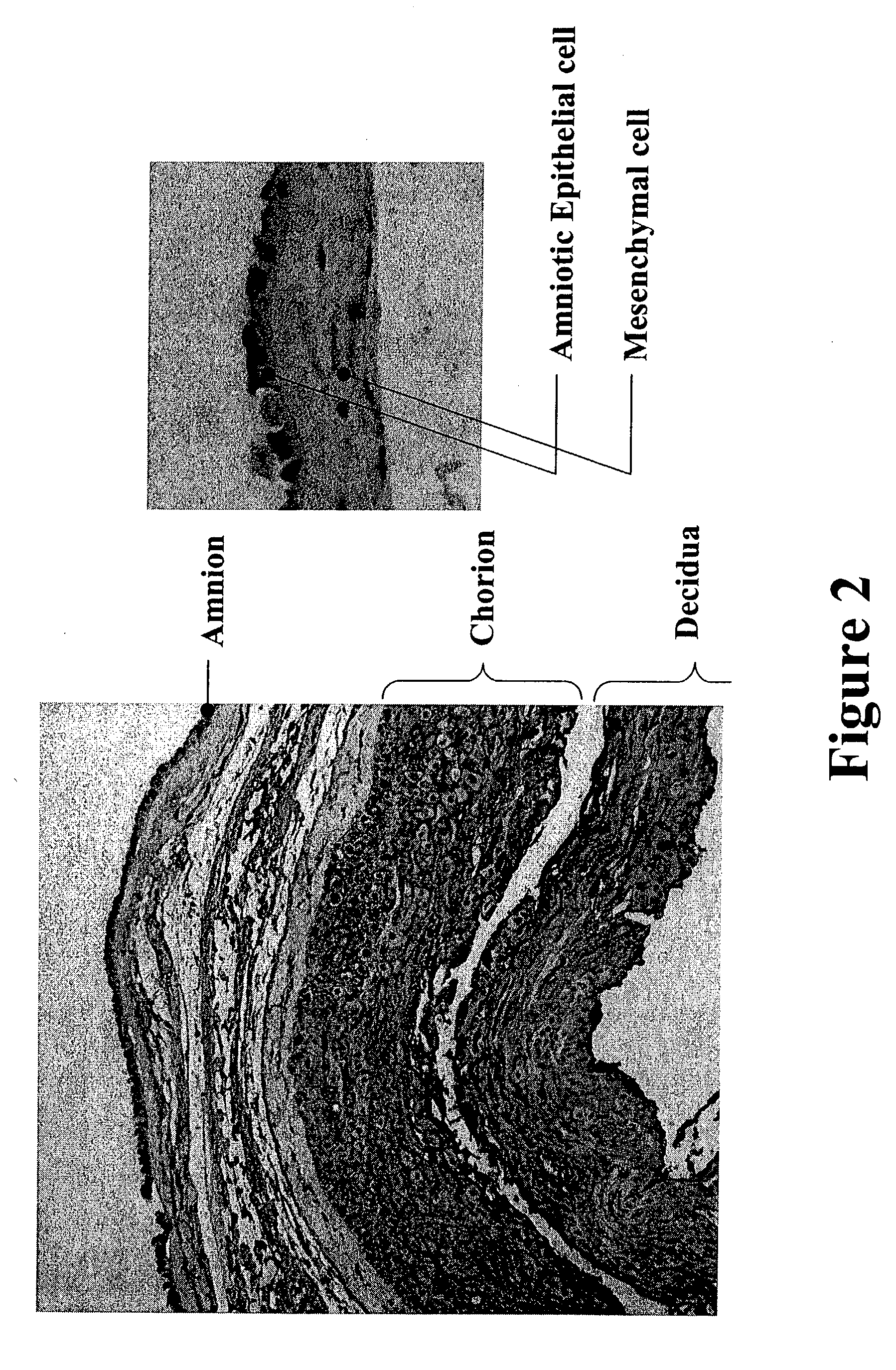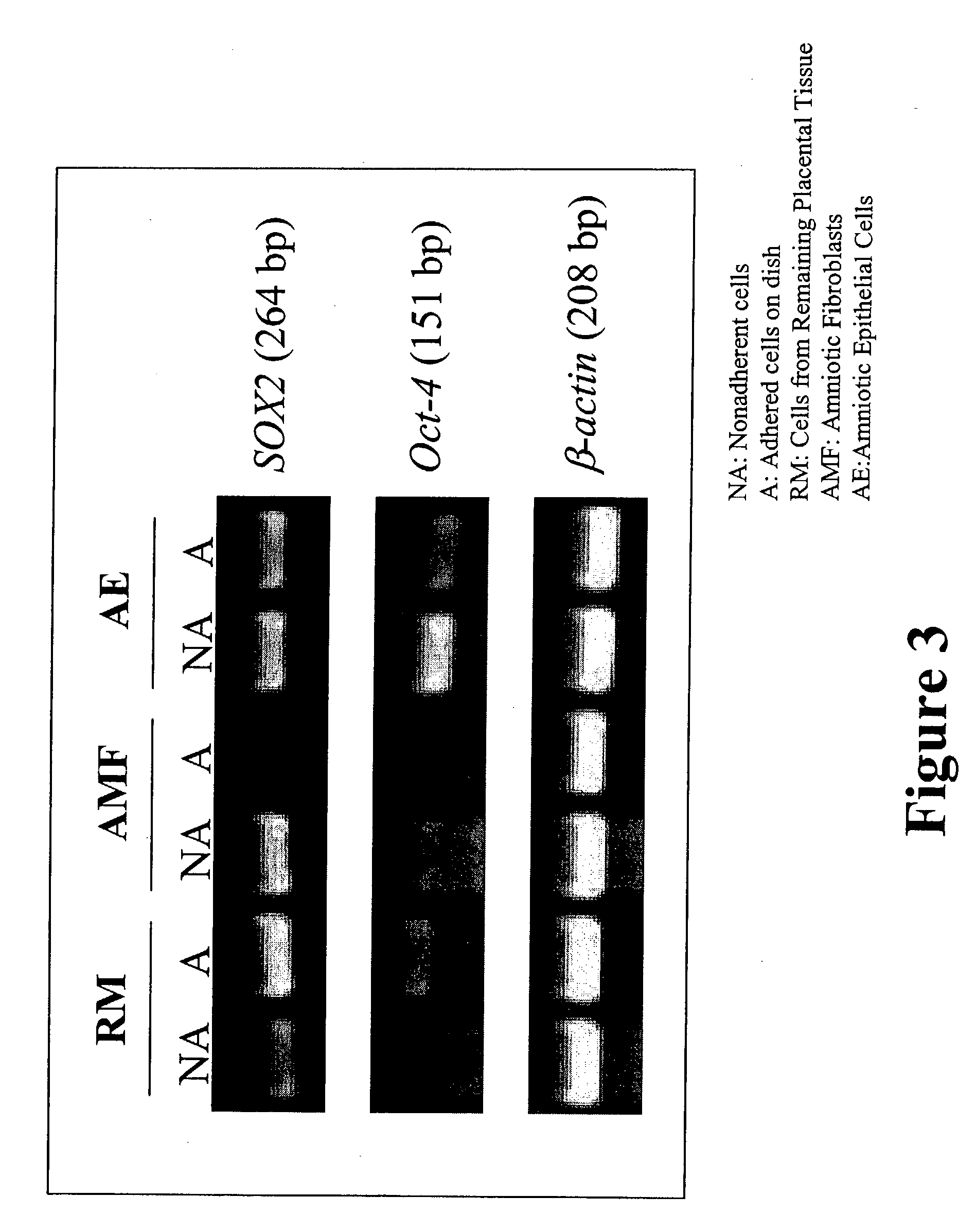Placental derived stem cells and uses thereof
a stem cell and placental technology, applied in the field of new cells, can solve the problems of limiting the use of embryonic stem cells to a few established cell lines, invasive and painful isolation of such stem cells from individuals, and achieve the effect of increasing the viability and growth of transplanted cells
- Summary
- Abstract
- Description
- Claims
- Application Information
AI Technical Summary
Problems solved by technology
Method used
Image
Examples
Embodiment Construction
[0047] The present invention features novel placental derived stem cells that can be obtained from the amnion, chorion or decidual layers of the placenta. Exemplary cells were deposited with American Type Culture Collection, 10801 University Blvd. Manassas, Va. 20110-2209 ______, 2003 and have been assigned ATCC accession number ______. The placental derived stem cells of the invention express markers normally associated with embryonic stem cells including but not limited to c-kit, Thy-1, OCT-4, SOX2, hTERT, SSEA1, SSEA3, SSEA4, TRA1-60 and TRA1-81.
[0048] In addition, these placental derived stem cells have been found to be capable of differentiating into a variety of tissue types including but not limited to hematopoetic, liver, pancreatic, nervous and endothelial tissues. Such cells are particularly useful to restore function in diseased tissues via transplantation therapy or tissue engineering, and to study metabolism and toxicity of compounds in drug discovery efforts.
[0049] In ...
PUM
| Property | Measurement | Unit |
|---|---|---|
| volume | aaaaa | aaaaa |
| thickness | aaaaa | aaaaa |
| composition | aaaaa | aaaaa |
Abstract
Description
Claims
Application Information
 Login to View More
Login to View More - R&D
- Intellectual Property
- Life Sciences
- Materials
- Tech Scout
- Unparalleled Data Quality
- Higher Quality Content
- 60% Fewer Hallucinations
Browse by: Latest US Patents, China's latest patents, Technical Efficacy Thesaurus, Application Domain, Technology Topic, Popular Technical Reports.
© 2025 PatSnap. All rights reserved.Legal|Privacy policy|Modern Slavery Act Transparency Statement|Sitemap|About US| Contact US: help@patsnap.com



